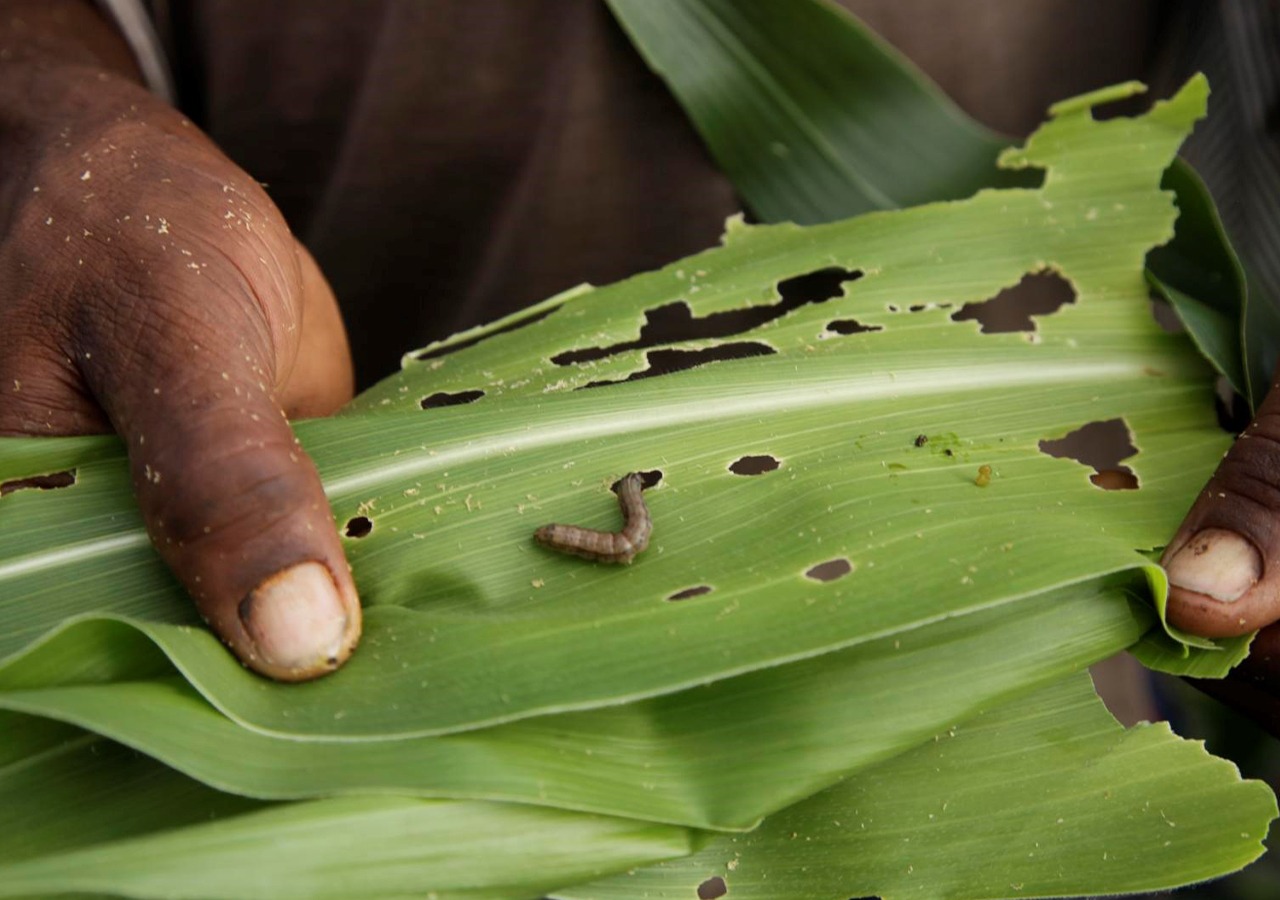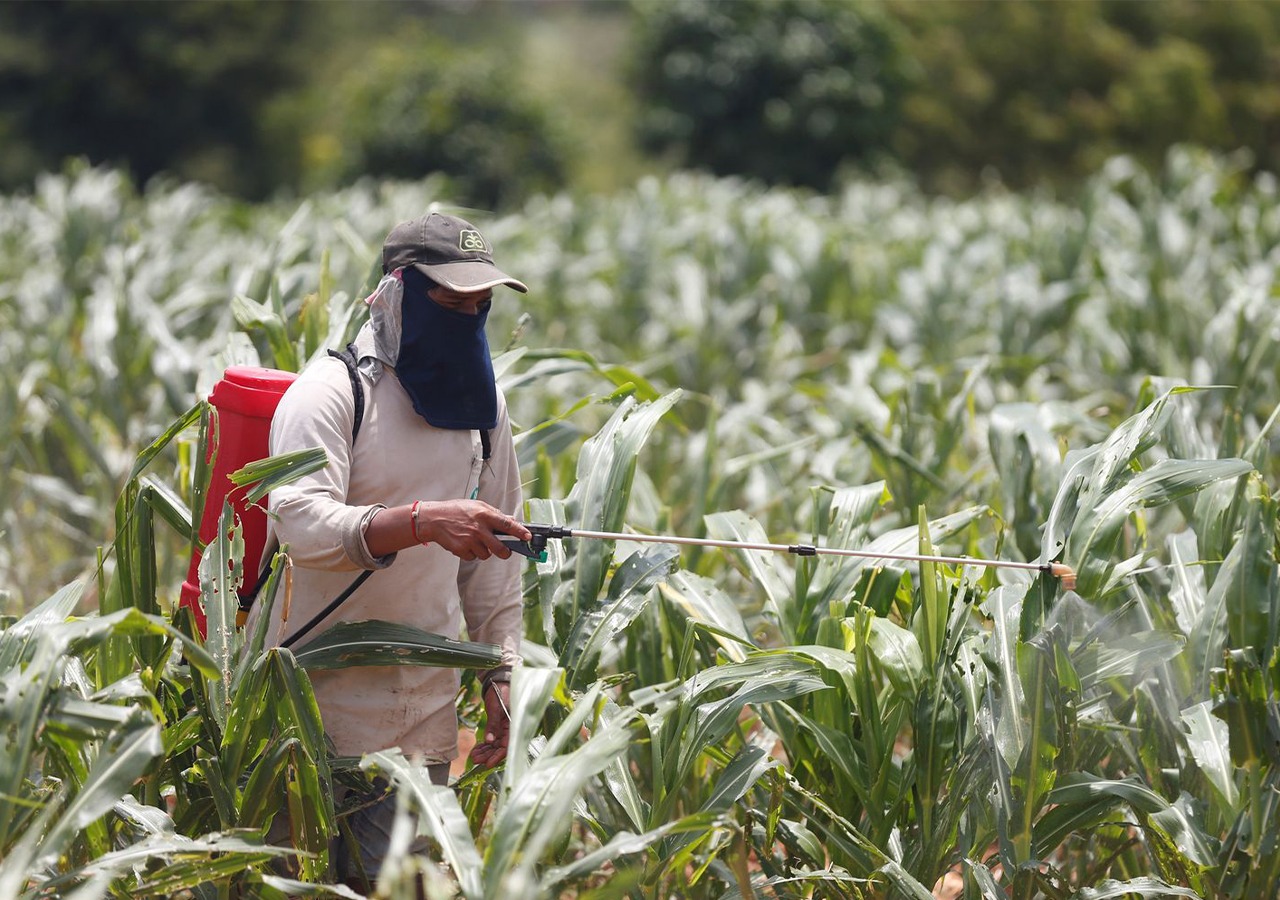Fall Armyworm (Spodoptera frugiperda) belongs to the order Lepidoptera and is the larval form of Armyworm moth.
The larva has been known to be a prime pest in the American continents.
Back in 2016, the first reports of it invading the African continents came where it was causing significant damages to the maize crops.
Since 2016, it has already invaded 28 countries in Africa and early 2018 the reports of the pest invading India came.
Currently, it has been reported that the pest has infiltrated the neighbouring countries around India, causing a heavy infestation of corn plants in Sri Lanka.
Life Cycle

The pest completes its life cycle in four stages egg, larva, and pupa and finally an adult.
It gets completed in 30 days during the summer season, 60 days in autumn, spring, and 80 to 90 days during the winter.
The total egg production of a female average to 1500 with a maximum of 2000.
However, the duration of the egg stage is only two to three days during the summer season.
The larval stage is the most lethal stage of the plants. The greenish larvae with the blackhead will consume leaves, steam, kernels, etc.
Fall Armyworm’s larval period lasts up to 14 days in the summer and maybe extended up to 30 days during the cold season.
The pupal stage is normally spent in the soil with depth 2 to 8 cm.
Duration of the pupal stage is eight to nine days in summer and may reach twenty to thirty days in the winter.
The adult moth has a wingspan of 32 to 40 mm. The male and female are identified by the presence of general brown and dark color forewing in males with triangular white spots.
After being in the adult stage for 3 to 4 days the female moth lays eggs. The duration of adult life is 10 days with a range of 7 to 21 days.
Host Plants

Fall Armyworm has a wide variety of hosts. The study shows the pest feeds around 80 varieties of plants.
The pest targets Rice, maize, peanut, tobacco and even fruits such as apple, oranges and much more.
It can destroy the whole crops overnight as the first instar larvae need a very little amount of food whose presence can be barely noticed and the later larval stages require 50 times more food.
The larva is so much dangerous because in corn it will borrow into corn ear to eat the kernels.
Management of Fall Armyworm
Sampling

The adult moths can be sampled through the use of pheromone and blacklight traps.
Pheremone traps should be suspended at the canopy height and are preferable in corn.
Cultural Technique
The most popular cultural practice adopted in western countries is early planting or the use of the early varieties.
Early harvest escapes the high-density attack on the corn ears.
Plant diversity has also been found as a very useful cultural practice as it reduces fall armyworm infestation and increases natural predators.
Host plant resistance
In western countries, some sweet corn varieties provide partial resistance but are not sufficient for complete protection.
Biological Control

Bacillus thuringiensis is shown to reduce a significant number of Armyworm larvae in corn and the success depends on having the pathogen on the foliage when they appear.
Fly and wasp parasitoids like Archytas marmoratus, Cotesia marginventris, etc can also be used against Armyworm depending on location.
The common predators’ Birds, rodents, earwigs also hunt the armyworm and cause a significant decrease in their population.
Insecticides

The insecticides are applied through irrigation if they are applied through overhead sprinklers.
Granular insecticides are applied to the young plants because the particle falls deep into the whorl.
Some resistance to insecticides has been noted with resistance varying regionally.
In some places, insecticides have to be applied daily during the silking stage to protect the corn from the pest.
Fall Armyworm in Nepal
After the first time detection of the worm in 2018 in India, it was not long before the pest made its way to Nepal.
Neighbouring country with an open border made the pest even a smother road to invade Nepal.
The first case was reported in the Nawalparasi district in western Nepal on May 9, 2019.
The country produces a huge amount of corn on an annual basis with only second to rice production.
And because the pest’s favorite food is maize, there is a huge burden on the Nepal Agriculture Research Council (NARC) as it is the most harmful pest in the world which was capable of making the loss of crop of worth $13.3 billion in Africa in 2016.
As the pest has also invaded almost all of the countries of the Middle East including China, Indonesia, South Korea, Sri Lanka it is to be seen how the counties will protect their crops from Fall Armyworm.






